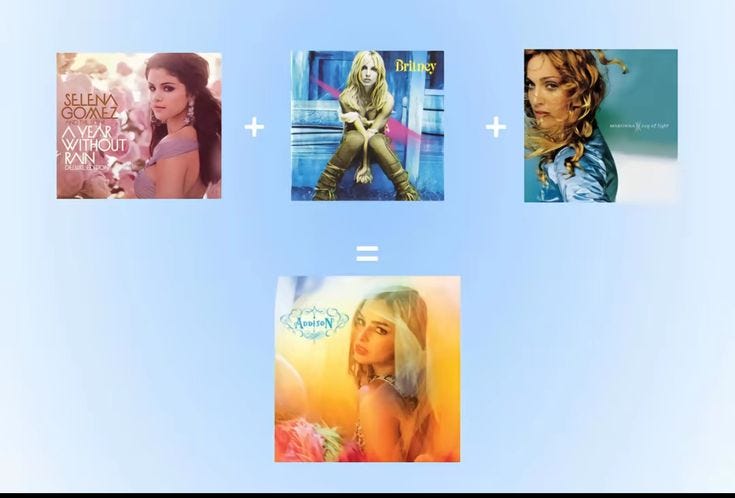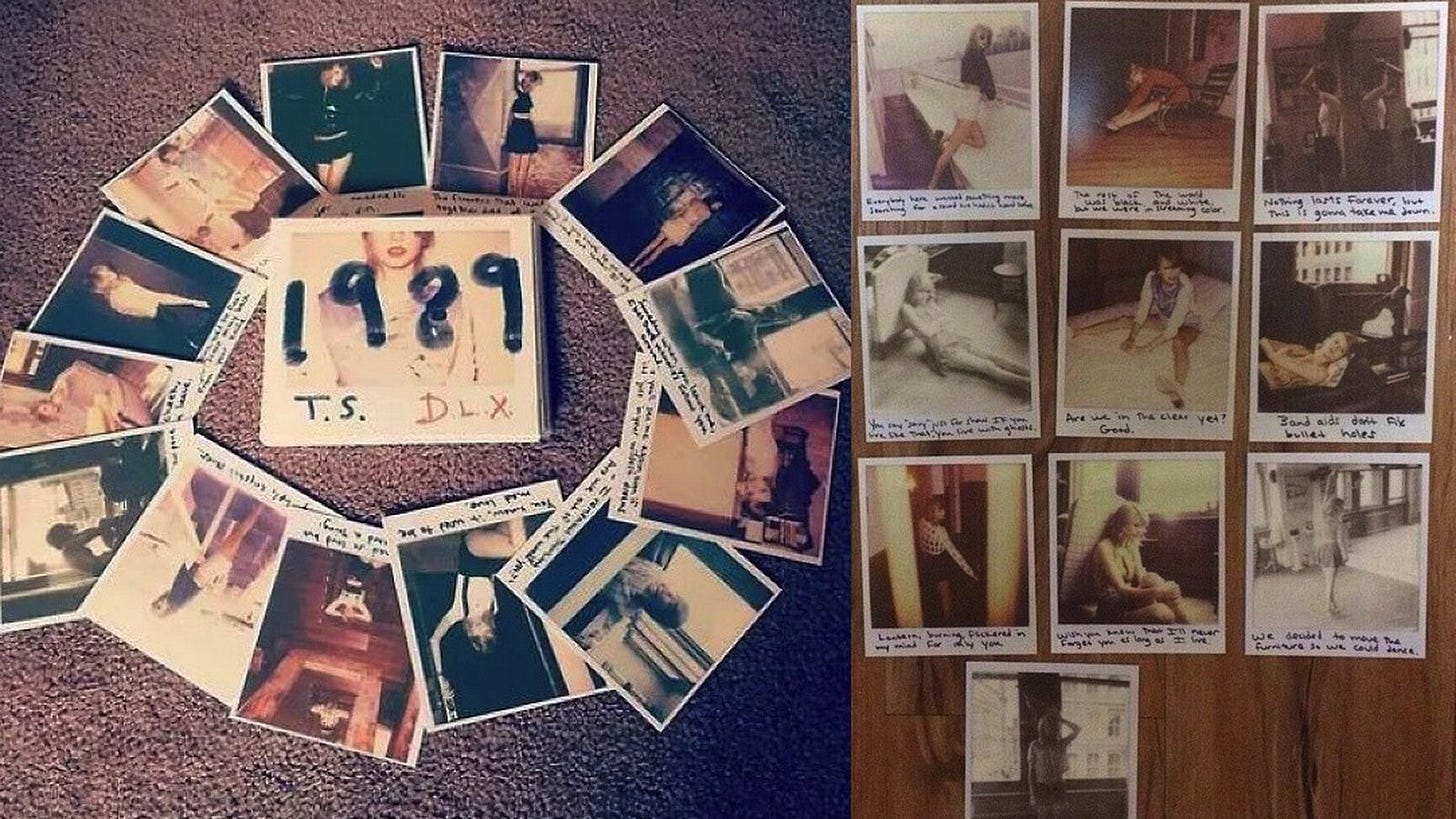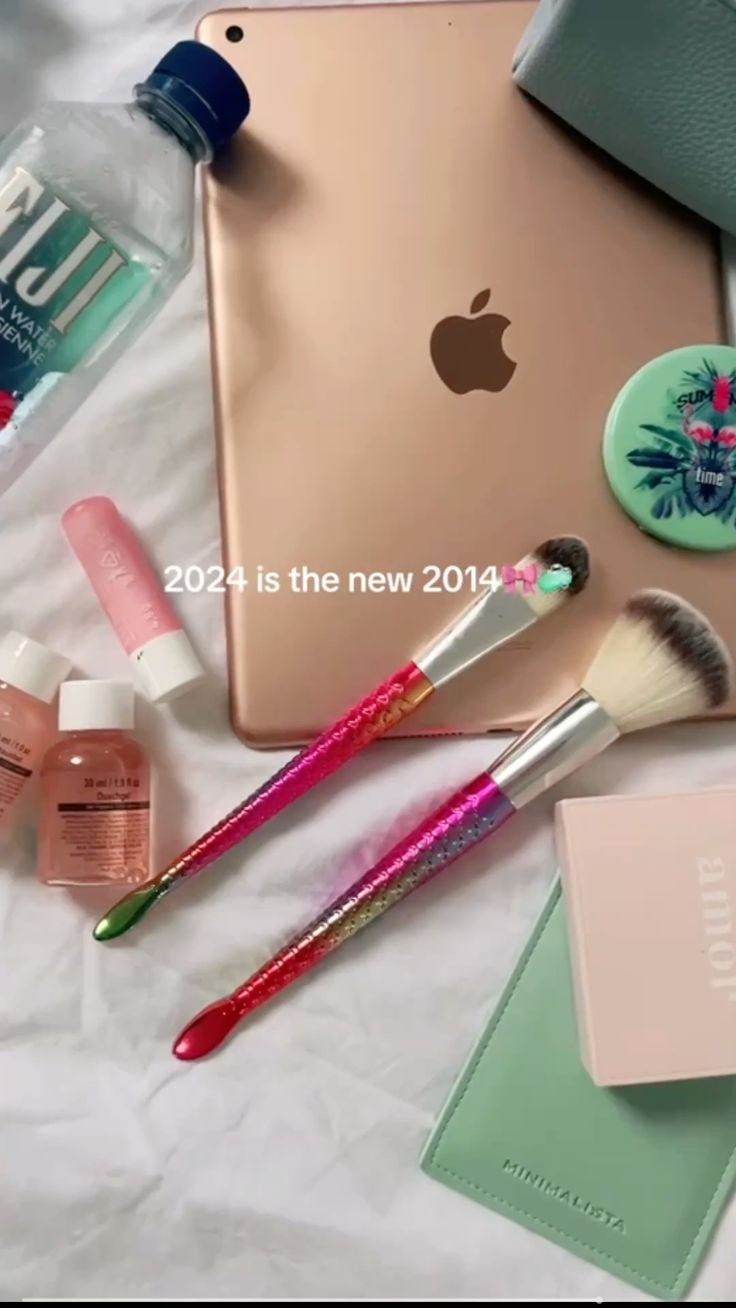Stop getting upset that Addison Rae is the Britney Spears of our generation
Built From teen Vogue and doom scrolling: the hollowness and complexity of pop culture under late stage capitalism.
TikTok is the epitome of asininity, and we all know it. Infamously associated with the word Brain rot and being responsible for deteriorating the attention spans of its users, at its core the app has failed to serve for nothing more than unremarkable entertainment. That however, cannot be applied to former TikTok influencer Addison Rae, who profited from Gen Z's love for doom scrolling and the app's trend-setting epidemic. Whether her rebrand from foolish social media dancer to Popstar was a plan all along or not, her influencer era certainly served as the starting appetiser which would later lead to the banquet of her current stardom.
Posing with bold delineated eyes, surrounded by a world of neon colours and a hue of bright yellow, her debut album released on June 6th clearly pays homage to the playfulness of the early 2000s

But seriously, five years ago who would have even thought that half a decade later the 19-year old influencer–a subject of constant online mockery would receive pervasive comparisons to Britney Spears. Yes, Spears, the renowned American singer rendered the "princess of Pop"—the iconic face of the early 21st century, the voice behind Toxic and Oops I did it again

This comparison has social media users and culture commentators splattered and raging in controversy—though not even a bit close to the regurgitative dilemma of Sabrina Carpenter's new album.
Although the parallels begin at their physical resemblance: soft gaze, blondish hair, youthful eyes and expressive smile, it certainly extends beyond that. Their shared curation of an almost hyper-feminine persona, one that presents itself with soft glamour and a carefree attitude reflects the substance of their art. Tracks which encapsulate the feeling of what it means to be a young woman navigating her life, dealing with both the glittery and the shadowy. The highs and the lows.
Track 8 of Rae's album In The Rain is somewhat reminiscent of Spears Lucky in which they both hide their vulnerability under upbeat tunes. However, unlike Spears, Rae is a kind of daydreamer, almost like Lana Del Rey–romanticising life and wrapping herself in affirmations.
I could certainly continue concocting and presenting arguments that draw their similarities and differences further. How Spears was a trailblazer—an artistic leader of her generation, rising to fame organically—influencing the pop culture canon. And Rae a revivalist who managed to reinvent herself through cutting magazine images from 2003 teen Vogue and plastering them across her body.
I could also continue debunking comments on social media platforms ranging from "very disrespectful for a star like Britney to be compared to a TikToker" to "Addison Rae is the reincarnation of Britney Spears."
But doing so would be steering away from the core of this dilemma. Because, this is not about whether Addison Rae is some rattling rebirth of Spears, but at its essence this gets down to a sentimental and wishful longing for the past. It gets down to the collective consciousness of society—its Geist which looks toward the past and not the future, nor the present.
At its core this is about Nostalgia. Hence those who deem Rae an inauthentic artist—a baseless mime, copying the shadow of the 2000s -- must not get upset at her, nor at those who claim that she is this generation's Britney Spears.
Rather, if there is anyone to villainize or get upset over is the current political climate—a capitalistic, fear mongering status quo that teeters over the brink of a nuclear war.
Cultural critic and thinker Frederic Jameson argued how postmodern art heavily relying on nostalgia is a product of late-stage capitalism. Rooted in marxist thinking, he disputed that the present was too fast-paced, too globalised, too technological for artists to get a grip onto, thus the reliance on the past. However, to be frank, it is not only a matter of the status quo itself being elusive, but it is a matter of escapism, of wanting to experience an age that appears golden, more simple, more polished than what we have.
So no, Addison Rae is not this generation's Britney Spears. She is rather an encapsulation of the zeitgeist of the 2000s, a commodified perfume that with a splash gives a quick scent of a time that appears more bubbly and less induced with doom. She's a childhood picture that reminds of tuning into the VMAS on a Saturday night with no recollection of past negativity or existential concerns. For those that were not alive or grown up during that era, she is a painting that appears perfect, inducing longing for a perfected past time that somehow they were 'unlucky' to not have experienced.
And yet, the aestheticization of the 2000s overshadows the fact that the beginnings of the 21st century were in fact not simpler, or 'golden'. Although there was an absence of incessant doom scrolling and it was not plagued by the rise of Artificial intelligence, I'd go as far to say that it was not any better than the present. We forget that the 2000s were faced with the 2008 market crash, raging war in Iraq and Afghanistan, 9/11, and natural disasters in Asia and the United States.
This is exactly what Jameson is endeavouring to encapsulate with his philosophy. In late stage capitalism, art and pop culture consistently reference past eras and time periods, without tackling the reality of the historical conditions. Hence, becoming a superficial form of homage that serves as an instrument for escapism. Merely a romanticised remembrance of the past.
However, it is naive to say that this phenomenon in art is only limited to the former Tiktok star. It seems as if the present has no spirit and the only one that it has is one borrowed from the past. Collectively, Pop-culture relies on artistic pastiche, where everything appears as a reference, and novelty is abolished.
Sabrina Carpenter recently referenced Marilyn Monroe in the latest version of her album Man’s Best Friend.
In her Guts album photoshoot, Olivia Rodrigo referenced Hole's 1994 "Live through this."
The Weeknd consistently alludes to David Lynch and Kubrick in his music videos. Even as a franchise, Disney is failing to generate new films or cartoons that capture the essence of the present. Instead they insist on remaking their classic films, distorting their original ethos—one which captures the status quo and struggles of the time in which they took place. A quintessential example is the latest lazy 'feminist' rendition of Snow White starring Rachel Ziegler and Gal Gadot.
Even Taylor Swift's grammy-awarded pop album 1989 heavily aestheticizes the 80's without really engaging with the status quo of that era. However, that fact is not something to be utterly indignant about. Artists, especially those within the pop-mainstream genre are known for relying on visuals for entertainment and audience palatability without depth. Interestingly though, Swift's album, just like Addison's, knew how deeply ingrained nostalgia is within the masses. They knew how to cater their album's curated visuals well. In fact well enough that the polaroid camera saw a resurgence, seeing a 30% increase in sales in 2014. Ironically, Swifts synth pop album which was sonically borrowed from the 80s, is now characteristic of what we call the 2010s pop—an era we now too, long to go back to.

"2024 is the new 2014" these were the words that permeated social media last year, reminding us that not only is society constantly endeavoring to escape the present, but that authenticity in popular culture is now non-existent.

Culture is fan fiction, where everything is built on top of another. Culture has failed to learn from Nara Smith where everything is built organically, and instead it has learned to emulate pillow-faced influencers that love to repel naturalness.
Arguably, pop culture has always relied on nostalgia, but the peak of its reliance hits most when the world senses itself to be on its final stages—rumours of war, death, doom and decadence. When the world saw itself in a troublesome pandemic five years ago social media saw the resurgence of the "indie aesthetic" an attempt to once again emulate the vivacious spirit of the 2000s .
Now with a US attack on Iran's military bases, death in Gaza and speculations of nuclear attacks on the world, Addison Raes debut album entraps Gen Z into a whimsical bubble of hyper-femininity and personal affirmations of success.
Nonetheless, if you look close enough, beneath the superficiality of Addison's whimsy, high heels, rhinestones and upbeat tracks, you notice that in actuality she is not only a product of nostalgia, but she herself seems to be brimming with that same sentiment which makes her appealing.
The 10th track of her album Times Like These is a dreamy tune which opens with a sentimental keyboard chord that feels almost familiar—something your older cousin would play in her 2005 monitor. A tune that captures the feeling of sunset fading into dawn, so wistful it could perfectly fit into the soundtrack of The Devil Wears Prada, Sex and the City or Pretty Little Liars.
"I'm so confused / My life moves faster than me Can't feel the ground beneath my feet / No matter what I try to do In times like these, it's how it has to be /It's not my fate in the end Let go of all that could've been"
Her oscillation between looking at the past with longing and doom-fully accepting her present circumstances displays how she herself brims with nostalgia. A Nostalgia that is both timeless and specific to the 2020s. Frederic Jameson's description of society under late stage capitalism is starkly reflected in her lyrics.
"My life moves faster than me”. Society is too accelerated, too fast paced for her to grasp, on both a personal and collective level.
This track caught my attention as soon as it met my ears. Primarily because it displays her authenticity. It is visceral, honest and also highly reminiscent of Nelly Furtado's 2006 track "All Good Things (Come to an End)," a song my mother would play on her ipod on car rides when I was younger.
Addison knew well how to cater to my yearning for the past. What a coincidence that her most nostalgic track was the one that was going to be the one most loved by me. It reminds me how I am nostalgia's favourite victim—deployed daily to fight at the frontline of a war against it.
Whether Addison is this Generation's Britney Spears or not holds little to no relevance. What is deserving of a headline, perhaps a little thought, or two is the way in which her art reflects the manner we cope with the status quo.
Between her upbeat tracks such as "Summer Forever," touching on a fearless summer romance, "Aquamarine," a tune of personal confidence and "Headphones On" a track about coping with inner despair—it is clear that they capture the extremities of emotions. Not only such but the over-saturation of experiences, feelings and content—which makes up who we are.
Addison might be performative, not the most authentic out there, but what she certainly does well is acting as both an escape and a mirror. And we must look at the mirror to see how well she reflects our attitudes and fears toward an uncertain and unprecedented world which feels unyielding and more frightening by the minute.
Thank you for reading! let me know your thoughts!










There's an idea I've heard before, something akin to "Slogans have killed rational thought". I think perhaps we can construct a similar argument about labels that imply a sort of cultural taxidermy. That is, preserving the image of a nostalgic figure within a modern icon. I think it may also apply in either context, a positive or a negative one. As I understand it, it seems that there's a negative connotation to lots of the people give Addison Rae this label. I don't think it'd be a whole lot better if people meant it positively. We'd be propping them up with sentimentality and selective memory and pretend its honor. Just something you sparked when you mentioned the label was irrelevant! This piece was great! Love your work!